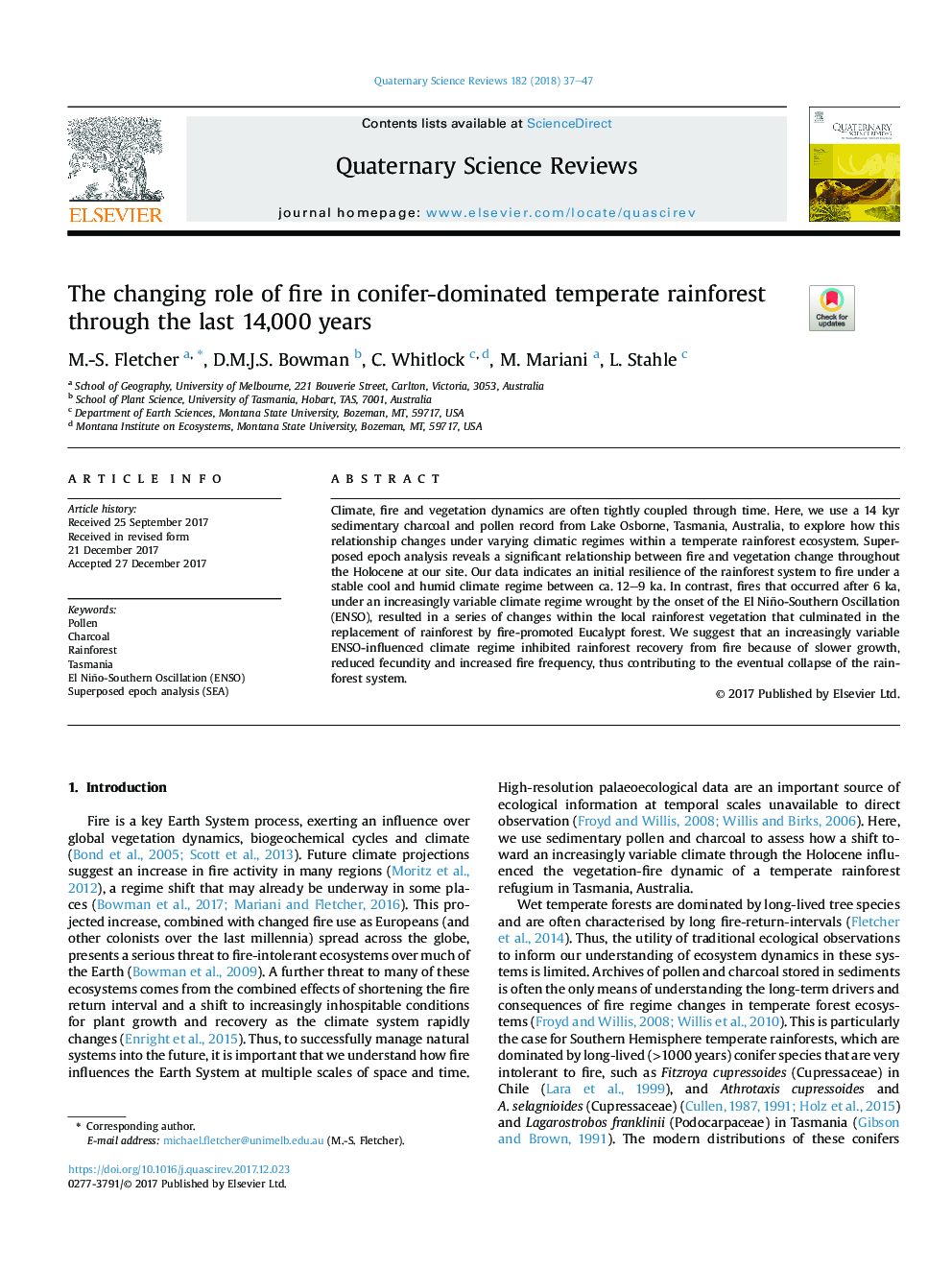| Article ID | Journal | Published Year | Pages | File Type |
|---|---|---|---|---|
| 8914987 | Quaternary Science Reviews | 2018 | 11 Pages |
Abstract
Climate, fire and vegetation dynamics are often tightly coupled through time. Here, we use a 14 kyr sedimentary charcoal and pollen record from Lake Osborne, Tasmania, Australia, to explore how this relationship changes under varying climatic regimes within a temperate rainforest ecosystem. Superposed epoch analysis reveals a significant relationship between fire and vegetation change throughout the Holocene at our site. Our data indicates an initial resilience of the rainforest system to fire under a stable cool and humid climate regime between ca. 12-6 ka. In contrast, fires that occurred after 6 ka, under an increasingly variable climate regime wrought by the onset of the El Niño-Southern Oscillation (ENSO), resulted in a series of changes within the local rainforest vegetation that culminated in the replacement of rainforest by fire-promoted Eucalypt forest. We suggest that an increasingly variable ENSO-influenced climate regime inhibited rainforest recovery from fire because of slower growth, reduced fecundity and increased fire frequency, thus contributing to the eventual collapse of the rainforest system.
Related Topics
Physical Sciences and Engineering
Earth and Planetary Sciences
Geology
Authors
M.-S. Fletcher, D.M.J.S. Bowman, C. Whitlock, M. Mariani, L. Stahle,
